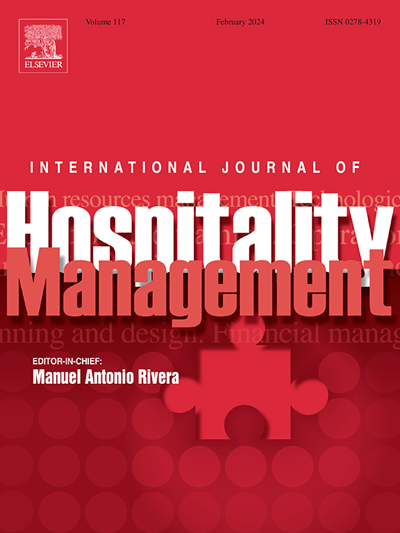同甘共苦:相邻餐厅的生存有什么关系?
IF 8.3
1区 管理学
Q1 HOSPITALITY, LEISURE, SPORT & TOURISM
International Journal of Hospitality Management
Pub Date : 2025-09-18
DOI:10.1016/j.ijhm.2025.104461
引用次数: 0
摘要
本研究采用空间自论方法对特定地理尺度下餐馆生存的溢出效应进行实证评估。特别是,该研究包括两个样本组:正常时期(2015年1月1日至2019年12月31日)的37,761个观测值和COVID危机时期(2020年1月1日至2022年12月31日)的38,170个观测值。结果表明,相邻餐厅的生存正提高了给定餐厅的生存概率。特别是在正常和危机时期,餐馆生存的正溢出效应主要发生在400米半径范围内。在正常时期,快餐店和休闲餐厅之间的溢出效应强于全服务餐厅;然而,前者在危机时期变得更弱。在正常和危机时期,采用专业化战略的餐馆的溢出效应比采用多元化战略的餐馆更显著。本文章由计算机程序翻译,如有差异,请以英文原文为准。
Together through thick and thin: How does the survival of neighboring restaurants matter?
This study employs a spatial autologistic approach to empirically estimate the spillover effects of restaurant survival within a specific geographical scale. In particular, the study includes two sample groups: 37,761 observations from a normal period (January 1, 2015–December 31, 2019) and 38,170 observations from a COVID crisis period (January 1, 2020–December 31, 2022). Results indicate that the survival of the neighboring restaurants positively enhances a given restaurant’s survival probability. In particular, the positive spillover effect of restaurant survival for both normal and crisis periods occurs mainly within a 400-meter radius. During the normal period, the spillover effect among quick-service and casual dining restaurants is stronger than among full-service restaurants; however, the former becomes weaker during the crisis period. During normal and crisis periods, the spillover effect among restaurants employing a specialization strategy is more substantial than among restaurants adopting a diversification strategy.
求助全文
通过发布文献求助,成功后即可免费获取论文全文。
去求助
来源期刊

International Journal of Hospitality Management
HOSPITALITY, LEISURE, SPORT & TOURISM-
CiteScore
21.20
自引率
9.40%
发文量
218
审稿时长
85 days
期刊介绍:
The International Journal of Hospitality Management serves as a platform for discussing significant trends and advancements in various disciplines related to the hospitality industry. The publication covers a wide range of topics, including human resources management, consumer behavior and marketing, business forecasting and applied economics, operational management, strategic management, financial management, planning and design, information technology and e-commerce, training and development, technological developments, and national and international legislation.
In addition to covering these topics, the journal features research papers, state-of-the-art reviews, and analyses of business practices within the hospitality industry. It aims to provide readers with valuable insights and knowledge in order to advance research and improve practices in the field.
The journal is also indexed and abstracted in various databases, including the Journal of Travel Research, PIRA, Academic Journal Guide, Documentation Touristique, Leisure, Recreation and Tourism Abstracts, Lodging and Restaurant Index, Scopus, CIRET, and the Social Sciences Citation Index. This ensures that the journal's content is widely accessible and discoverable by researchers and practitioners in the hospitality field.
 求助内容:
求助内容: 应助结果提醒方式:
应助结果提醒方式:


